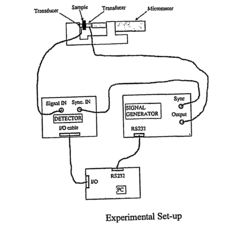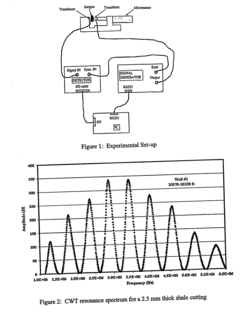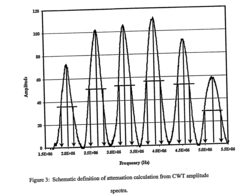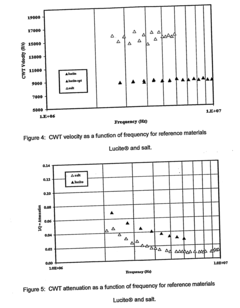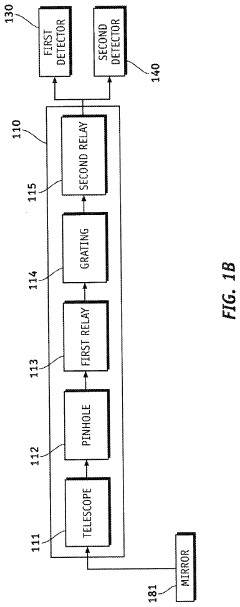Longitudinal wave applications in archaeological site preservation
AUG 13, 20259 MIN READ
Generate Your Research Report Instantly with AI Agent
Patsnap Eureka helps you evaluate technical feasibility & market potential.
Longitudinal Wave Tech Background and Objectives
Longitudinal waves, also known as compression waves, have been a subject of interest in various scientific fields for decades. In the context of archaeological site preservation, these waves have emerged as a promising tool for non-invasive investigation and protection of cultural heritage. The evolution of this technology can be traced back to the early 20th century when seismic waves were first used in geophysical exploration. However, it was not until the late 1980s that researchers began to explore the potential of longitudinal waves in archaeology.
The primary objective of applying longitudinal wave technology in archaeological site preservation is to develop non-destructive methods for site assessment, monitoring, and conservation. This technology aims to provide detailed subsurface information without the need for excavation, thereby minimizing the risk of damage to fragile artifacts and structures. Additionally, longitudinal waves offer the potential for large-scale surveys, enabling archaeologists to map entire sites efficiently and cost-effectively.
Over the past few decades, the application of longitudinal waves in archaeology has seen significant advancements. Early techniques focused on basic ground-penetrating radar (GPR) systems, which utilized high-frequency electromagnetic waves to detect subsurface anomalies. As technology progressed, more sophisticated methods emerged, including seismic refraction and reflection techniques, which leverage the properties of longitudinal waves to create detailed images of buried structures and artifacts.
Recent developments in this field have led to the integration of longitudinal wave technology with other cutting-edge tools, such as LiDAR (Light Detection and Ranging) and photogrammetry. This fusion of technologies has resulted in more comprehensive and accurate site assessments, allowing researchers to create highly detailed 3D models of archaeological sites and their surrounding landscapes.
The current technological trend in longitudinal wave applications for archaeological site preservation is moving towards higher resolution imaging, increased penetration depth, and improved data processing algorithms. Researchers are exploring the use of multi-frequency and multi-component wave systems to enhance the detection and characterization of buried features. Furthermore, advancements in machine learning and artificial intelligence are being leveraged to automate the interpretation of longitudinal wave data, making the technology more accessible to a broader range of archaeological professionals.
As we look to the future, the objectives for longitudinal wave technology in archaeological site preservation are multifaceted. These include developing more portable and user-friendly equipment, improving the accuracy of subsurface mapping, and enhancing the ability to differentiate between various types of archaeological features. Additionally, there is a growing focus on integrating longitudinal wave data with other forms of archaeological information to create comprehensive digital archives of cultural heritage sites, ensuring their preservation for future generations.
The primary objective of applying longitudinal wave technology in archaeological site preservation is to develop non-destructive methods for site assessment, monitoring, and conservation. This technology aims to provide detailed subsurface information without the need for excavation, thereby minimizing the risk of damage to fragile artifacts and structures. Additionally, longitudinal waves offer the potential for large-scale surveys, enabling archaeologists to map entire sites efficiently and cost-effectively.
Over the past few decades, the application of longitudinal waves in archaeology has seen significant advancements. Early techniques focused on basic ground-penetrating radar (GPR) systems, which utilized high-frequency electromagnetic waves to detect subsurface anomalies. As technology progressed, more sophisticated methods emerged, including seismic refraction and reflection techniques, which leverage the properties of longitudinal waves to create detailed images of buried structures and artifacts.
Recent developments in this field have led to the integration of longitudinal wave technology with other cutting-edge tools, such as LiDAR (Light Detection and Ranging) and photogrammetry. This fusion of technologies has resulted in more comprehensive and accurate site assessments, allowing researchers to create highly detailed 3D models of archaeological sites and their surrounding landscapes.
The current technological trend in longitudinal wave applications for archaeological site preservation is moving towards higher resolution imaging, increased penetration depth, and improved data processing algorithms. Researchers are exploring the use of multi-frequency and multi-component wave systems to enhance the detection and characterization of buried features. Furthermore, advancements in machine learning and artificial intelligence are being leveraged to automate the interpretation of longitudinal wave data, making the technology more accessible to a broader range of archaeological professionals.
As we look to the future, the objectives for longitudinal wave technology in archaeological site preservation are multifaceted. These include developing more portable and user-friendly equipment, improving the accuracy of subsurface mapping, and enhancing the ability to differentiate between various types of archaeological features. Additionally, there is a growing focus on integrating longitudinal wave data with other forms of archaeological information to create comprehensive digital archives of cultural heritage sites, ensuring their preservation for future generations.
Archaeological Site Preservation Market Analysis
The archaeological site preservation market has been experiencing steady growth in recent years, driven by increasing awareness of cultural heritage conservation and technological advancements. This market encompasses a wide range of products and services aimed at protecting and preserving archaeological sites from various environmental and human-induced threats.
The global market for archaeological site preservation is estimated to be valued at several billion dollars annually, with a compound annual growth rate (CAGR) of around 5-7% projected over the next five years. This growth is primarily attributed to rising government investments in cultural heritage preservation, growing tourism industry, and increasing public interest in historical sites.
Key market segments within archaeological site preservation include conservation materials, monitoring and diagnostic equipment, documentation and imaging technologies, and protective structures. Among these, the conservation materials segment holds the largest market share, followed by monitoring and diagnostic equipment.
Geographically, Europe dominates the market due to its rich archaeological heritage and strong government support for preservation initiatives. North America and Asia-Pacific regions are also significant markets, with the latter showing the highest growth potential due to rapid economic development and increasing focus on cultural tourism.
The market is characterized by a mix of established players and innovative startups. Major companies in this sector include specialized conservation firms, archaeological equipment manufacturers, and technology providers. There is a growing trend towards the adoption of advanced technologies such as 3D scanning, remote sensing, and non-invasive imaging techniques for site assessment and preservation.
Longitudinal wave applications represent a niche but growing segment within the archaeological site preservation market. These technologies are gaining traction due to their ability to provide non-destructive assessment of buried structures and artifacts. The market for longitudinal wave-based equipment and services is expected to grow at a CAGR of 8-10% over the next five years, outpacing the overall market growth rate.
Factors driving the demand for longitudinal wave applications include their effectiveness in detecting subsurface features, minimal impact on site integrity, and ability to cover large areas efficiently. However, challenges such as high initial equipment costs and the need for specialized expertise in data interpretation may limit widespread adoption in the short term.
Looking ahead, the archaeological site preservation market is poised for further growth, driven by technological innovations, increasing emphasis on sustainable tourism, and growing recognition of cultural heritage as a valuable economic asset. The integration of longitudinal wave technologies with other advanced preservation methods is expected to create new opportunities and enhance the overall effectiveness of archaeological site conservation efforts.
The global market for archaeological site preservation is estimated to be valued at several billion dollars annually, with a compound annual growth rate (CAGR) of around 5-7% projected over the next five years. This growth is primarily attributed to rising government investments in cultural heritage preservation, growing tourism industry, and increasing public interest in historical sites.
Key market segments within archaeological site preservation include conservation materials, monitoring and diagnostic equipment, documentation and imaging technologies, and protective structures. Among these, the conservation materials segment holds the largest market share, followed by monitoring and diagnostic equipment.
Geographically, Europe dominates the market due to its rich archaeological heritage and strong government support for preservation initiatives. North America and Asia-Pacific regions are also significant markets, with the latter showing the highest growth potential due to rapid economic development and increasing focus on cultural tourism.
The market is characterized by a mix of established players and innovative startups. Major companies in this sector include specialized conservation firms, archaeological equipment manufacturers, and technology providers. There is a growing trend towards the adoption of advanced technologies such as 3D scanning, remote sensing, and non-invasive imaging techniques for site assessment and preservation.
Longitudinal wave applications represent a niche but growing segment within the archaeological site preservation market. These technologies are gaining traction due to their ability to provide non-destructive assessment of buried structures and artifacts. The market for longitudinal wave-based equipment and services is expected to grow at a CAGR of 8-10% over the next five years, outpacing the overall market growth rate.
Factors driving the demand for longitudinal wave applications include their effectiveness in detecting subsurface features, minimal impact on site integrity, and ability to cover large areas efficiently. However, challenges such as high initial equipment costs and the need for specialized expertise in data interpretation may limit widespread adoption in the short term.
Looking ahead, the archaeological site preservation market is poised for further growth, driven by technological innovations, increasing emphasis on sustainable tourism, and growing recognition of cultural heritage as a valuable economic asset. The integration of longitudinal wave technologies with other advanced preservation methods is expected to create new opportunities and enhance the overall effectiveness of archaeological site conservation efforts.
Current Challenges in Longitudinal Wave Applications
The application of longitudinal waves in archaeological site preservation faces several significant challenges that hinder its widespread adoption and effectiveness. One of the primary obstacles is the complexity of wave propagation in heterogeneous materials commonly found at archaeological sites. The diverse composition of soil, rock, and artifacts creates intricate wave patterns that are difficult to interpret accurately.
Another major challenge is the limited penetration depth of longitudinal waves in certain soil conditions. Dense or water-saturated soils can significantly attenuate wave energy, reducing the effectiveness of the technique for deeper archaeological features. This limitation often necessitates the use of multiple frequencies or complementary geophysical methods to achieve comprehensive site assessment.
The resolution of longitudinal wave imaging techniques also presents a challenge, particularly when dealing with small or closely spaced archaeological features. Improving the spatial resolution while maintaining sufficient depth penetration requires advanced signal processing algorithms and innovative hardware designs, which are still under development.
Environmental factors such as temperature fluctuations, moisture content, and surface vegetation can introduce noise and artifacts in longitudinal wave data. These variables complicate data interpretation and may lead to false positives or missed detections of archaeological features. Developing robust methods to account for these environmental influences remains an ongoing research focus.
The non-invasive nature of longitudinal wave applications, while beneficial for site preservation, also presents challenges in ground-truthing and validation of results. Limited opportunities for excavation or physical sampling make it difficult to confirm the accuracy of wave-based interpretations, necessitating the development of advanced modeling and simulation techniques to enhance confidence in the findings.
Data processing and interpretation pose significant challenges, particularly in complex archaeological contexts. The vast amount of data generated by longitudinal wave surveys requires sophisticated software tools and expertise to analyze effectively. Developing user-friendly interfaces and automated interpretation algorithms that can handle the nuances of archaeological data remains a key area for improvement.
Lastly, the integration of longitudinal wave data with other archaeological and geophysical datasets presents both opportunities and challenges. While multi-method approaches can provide more comprehensive site assessments, the fusion of diverse data types requires advanced data integration techniques and interdisciplinary expertise, which are not always readily available in archaeological projects.
Another major challenge is the limited penetration depth of longitudinal waves in certain soil conditions. Dense or water-saturated soils can significantly attenuate wave energy, reducing the effectiveness of the technique for deeper archaeological features. This limitation often necessitates the use of multiple frequencies or complementary geophysical methods to achieve comprehensive site assessment.
The resolution of longitudinal wave imaging techniques also presents a challenge, particularly when dealing with small or closely spaced archaeological features. Improving the spatial resolution while maintaining sufficient depth penetration requires advanced signal processing algorithms and innovative hardware designs, which are still under development.
Environmental factors such as temperature fluctuations, moisture content, and surface vegetation can introduce noise and artifacts in longitudinal wave data. These variables complicate data interpretation and may lead to false positives or missed detections of archaeological features. Developing robust methods to account for these environmental influences remains an ongoing research focus.
The non-invasive nature of longitudinal wave applications, while beneficial for site preservation, also presents challenges in ground-truthing and validation of results. Limited opportunities for excavation or physical sampling make it difficult to confirm the accuracy of wave-based interpretations, necessitating the development of advanced modeling and simulation techniques to enhance confidence in the findings.
Data processing and interpretation pose significant challenges, particularly in complex archaeological contexts. The vast amount of data generated by longitudinal wave surveys requires sophisticated software tools and expertise to analyze effectively. Developing user-friendly interfaces and automated interpretation algorithms that can handle the nuances of archaeological data remains a key area for improvement.
Lastly, the integration of longitudinal wave data with other archaeological and geophysical datasets presents both opportunities and challenges. While multi-method approaches can provide more comprehensive site assessments, the fusion of diverse data types requires advanced data integration techniques and interdisciplinary expertise, which are not always readily available in archaeological projects.
Existing Longitudinal Wave Preservation Solutions
01 Generation and propagation of longitudinal waves
Longitudinal waves are characterized by oscillations parallel to the direction of wave propagation. Various devices and methods are used to generate and propagate these waves in different mediums, including solids, liquids, and gases. Applications range from acoustic systems to seismic exploration.- Generation and propagation of longitudinal waves: Longitudinal waves are characterized by oscillations parallel to the direction of wave propagation. Various devices and methods are used to generate and propagate these waves in different mediums, including solids, liquids, and gases. Applications range from acoustic systems to seismic exploration.
- Ultrasonic longitudinal wave applications: Ultrasonic longitudinal waves are utilized in numerous fields, including medical imaging, non-destructive testing, and industrial processes. These high-frequency waves can penetrate materials, allowing for detailed analysis and manipulation of internal structures without causing damage.
- Longitudinal wave sensors and detection systems: Sensors and detection systems based on longitudinal waves are employed in various applications, such as structural health monitoring, seismic activity detection, and underwater acoustic sensing. These systems often involve advanced signal processing techniques to extract meaningful information from the wave data.
- Longitudinal wave energy harvesting and conversion: Technologies have been developed to harness energy from longitudinal waves, particularly in oceanic environments. These systems convert the mechanical energy of waves into electrical energy, offering potential for renewable power generation in coastal and offshore locations.
- Longitudinal wave manipulation and control: Advanced techniques for manipulating and controlling longitudinal waves have been developed, including methods for focusing, steering, and modulating wave properties. These innovations find applications in areas such as targeted therapy, acoustic cloaking, and precision manufacturing processes.
02 Ultrasonic longitudinal wave applications
Ultrasonic longitudinal waves find extensive use in medical imaging, non-destructive testing, and industrial processes. These high-frequency waves can penetrate materials, allowing for detailed analysis and manipulation at the microscopic level. Specialized transducers and equipment are developed to generate and detect these waves efficiently.Expand Specific Solutions03 Longitudinal wave sensors and measurement techniques
Advanced sensors and measurement techniques are developed to detect and analyze longitudinal waves. These include piezoelectric sensors, fiber optic systems, and interferometric methods. Such technologies enable precise measurements in fields like structural health monitoring, geophysics, and materials science.Expand Specific Solutions04 Longitudinal wave energy harvesting and conversion
Innovative systems are designed to harness energy from longitudinal waves, such as those found in ocean waves or mechanical vibrations. These technologies convert wave energy into usable forms like electricity, potentially providing sustainable power sources for various applications.Expand Specific Solutions05 Longitudinal wave communication systems
Communication systems utilizing longitudinal waves are developed for scenarios where traditional electromagnetic waves are ineffective. These systems can operate in challenging environments such as underwater or through solid materials, offering unique solutions for data transmission and signaling.Expand Specific Solutions
Key Players in Archaeological Preservation Tech
The application of longitudinal waves in archaeological site preservation is an emerging field in the intersection of geophysics and cultural heritage conservation. The market is in its early growth stage, with increasing interest from both academic institutions and commercial entities. While the market size remains relatively small, it shows promising potential for expansion as the importance of non-invasive preservation techniques grows. Technologically, the field is still developing, with companies like BGP, Inc. and Baker Hughes Co. adapting their geophysical expertise to this niche application. Research institutions such as Southwest Research Institute and Ocean University of China are contributing to advancing the technology's maturity. Collaboration between industry leaders like China National Petroleum Corp. and academic partners is driving innovation in this specialized domain.
Southwest Research Institute
Technical Solution: Southwest Research Institute has pioneered the use of longitudinal wave technology in archaeological site preservation through their Advanced Ultrasonic Imaging System (AUIS). This system employs high-frequency longitudinal waves to create detailed subsurface images of archaeological artifacts and structures. The AUIS can penetrate various materials, including soil, rock, and degraded organic matter, to reveal hidden features and assess the condition of buried artifacts[2]. By utilizing phased array technology, the system can focus waves at different depths, providing a comprehensive 3D view of the site. Additionally, the institute has developed specialized software for real-time data interpretation, allowing for immediate on-site analysis[4].
Strengths: High-resolution subsurface imaging, versatility in various archaeological contexts, and real-time data analysis. Weaknesses: Requires skilled operators and may be less effective in highly saturated or loose soil conditions.
Dunhuang Research Institute
Technical Solution: Dunhuang Research Institute has developed a non-invasive longitudinal wave application system for archaeological site preservation. The system utilizes low-frequency acoustic waves to penetrate and analyze the structural integrity of ancient cave paintings and murals without causing damage. By employing advanced signal processing algorithms, the institute can detect micro-cracks, delamination, and moisture content in fragile artifacts[1]. The technology incorporates a network of strategically placed sensors to create high-resolution 3D maps of the site's condition, enabling conservators to prioritize restoration efforts and monitor changes over time[3].
Strengths: Non-invasive technique, high-resolution imaging, and long-term monitoring capabilities. Weaknesses: Limited to specific types of archaeological materials and potentially high implementation costs.
Innovative Longitudinal Wave Techniques Analysis
Use of cuttings for real time attenuation prediction
PatentInactiveUS20050016280A1
Innovation
- A portable continuous wave technique (CWT) tool measures amplitude spectra of drill cuttings at high resonant frequencies, allowing for real-time prediction of attenuation by preparing samples with parallel surfaces, using P- or S-wave transducers, and calculating velocity and attenuation through specific equations.
Mid-Wave and Long-Wave Infrared Point Spectrometer
PatentActiveUS20210131872A1
Innovation
- A compact mid-wave and long-wave infrared point spectrometer (MLPS) with a dual wavelength range of 2-4 μm and 5.5-12 μm, utilizing a bi-faceted grating and dual detectors to provide high spectral resolution and signal-to-noise ratio, enabling the discrimination of water forms and presence of volatiles, as well as the identification of minerals and thermal properties.
Environmental Impact of Acoustic Preservation
The application of longitudinal wave technology in archaeological site preservation has significant environmental implications that must be carefully considered. These acoustic preservation techniques, while offering innovative solutions for protecting cultural heritage, can potentially impact the surrounding ecosystem in various ways.
One of the primary environmental concerns is the effect of longitudinal waves on local wildlife, particularly in sensitive archaeological areas. The propagation of these waves through the air and ground may disrupt animal communication patterns, especially for species that rely on acoustic signals for mating, navigation, or predator avoidance. Long-term exposure to these waves could potentially alter animal behavior or force certain species to relocate, thereby affecting the local biodiversity.
Soil and vegetation in the vicinity of archaeological sites may also be affected by the continuous application of longitudinal waves. While the direct impact on plant life is generally minimal, changes in soil structure or composition due to wave propagation could indirectly influence vegetation growth patterns. This is particularly relevant in cases where the archaeological site is part of a larger ecosystem or protected natural area.
The energy requirements for generating and maintaining longitudinal wave systems must also be taken into account when assessing environmental impact. Depending on the scale of the preservation effort, these systems may consume significant amounts of electricity. If not sourced from renewable energy, this could contribute to increased carbon emissions and exacerbate climate change concerns.
Water bodies near archaeological sites may experience subtle changes due to acoustic preservation techniques. Longitudinal waves can propagate through water, potentially affecting aquatic ecosystems. While the impact is generally less pronounced than in terrestrial environments, it is essential to monitor any changes in aquatic biodiversity or behavior, especially in sites located near rivers, lakes, or coastal areas.
The use of acoustic preservation methods may also have implications for local air quality. While the waves themselves do not produce pollutants, the equipment used to generate them may emit particulates or other air contaminants, depending on the technology employed. This is particularly relevant in enclosed or poorly ventilated archaeological sites.
To mitigate these potential environmental impacts, it is crucial to conduct thorough environmental impact assessments before implementing longitudinal wave preservation techniques. This should include baseline studies of local ecosystems, ongoing monitoring programs, and the development of adaptive management strategies. By carefully balancing the needs of archaeological preservation with environmental conservation, it is possible to harness the benefits of acoustic technology while minimizing its ecological footprint.
One of the primary environmental concerns is the effect of longitudinal waves on local wildlife, particularly in sensitive archaeological areas. The propagation of these waves through the air and ground may disrupt animal communication patterns, especially for species that rely on acoustic signals for mating, navigation, or predator avoidance. Long-term exposure to these waves could potentially alter animal behavior or force certain species to relocate, thereby affecting the local biodiversity.
Soil and vegetation in the vicinity of archaeological sites may also be affected by the continuous application of longitudinal waves. While the direct impact on plant life is generally minimal, changes in soil structure or composition due to wave propagation could indirectly influence vegetation growth patterns. This is particularly relevant in cases where the archaeological site is part of a larger ecosystem or protected natural area.
The energy requirements for generating and maintaining longitudinal wave systems must also be taken into account when assessing environmental impact. Depending on the scale of the preservation effort, these systems may consume significant amounts of electricity. If not sourced from renewable energy, this could contribute to increased carbon emissions and exacerbate climate change concerns.
Water bodies near archaeological sites may experience subtle changes due to acoustic preservation techniques. Longitudinal waves can propagate through water, potentially affecting aquatic ecosystems. While the impact is generally less pronounced than in terrestrial environments, it is essential to monitor any changes in aquatic biodiversity or behavior, especially in sites located near rivers, lakes, or coastal areas.
The use of acoustic preservation methods may also have implications for local air quality. While the waves themselves do not produce pollutants, the equipment used to generate them may emit particulates or other air contaminants, depending on the technology employed. This is particularly relevant in enclosed or poorly ventilated archaeological sites.
To mitigate these potential environmental impacts, it is crucial to conduct thorough environmental impact assessments before implementing longitudinal wave preservation techniques. This should include baseline studies of local ecosystems, ongoing monitoring programs, and the development of adaptive management strategies. By carefully balancing the needs of archaeological preservation with environmental conservation, it is possible to harness the benefits of acoustic technology while minimizing its ecological footprint.
Legal Framework for Archaeological Site Tech Use
The legal framework governing the use of technology in archaeological site preservation, particularly for longitudinal wave applications, is complex and multifaceted. It encompasses international conventions, national laws, and local regulations that aim to protect cultural heritage while enabling scientific research and conservation efforts.
At the international level, the UNESCO Convention Concerning the Protection of the World Cultural and Natural Heritage (1972) provides a broad framework for the preservation of cultural sites. This convention emphasizes the importance of using appropriate scientific and technical methods for conservation and restoration. The ICOMOS Charter for the Protection and Management of the Archaeological Heritage (1990) further elaborates on the principles of archaeological site management, including the use of non-destructive techniques.
National legislation varies significantly between countries, but generally includes provisions for the protection of archaeological sites and the regulation of excavation and research activities. In many jurisdictions, the use of advanced technologies like longitudinal wave applications requires specific permits and approvals from heritage authorities. These laws often mandate that any technological interventions must be reversible and cause minimal impact to the site's integrity.
Environmental protection laws also play a crucial role in regulating the use of technology at archaeological sites. Many countries require environmental impact assessments before implementing new preservation techniques, especially those involving acoustic or electromagnetic waves. These assessments evaluate potential effects on both the archaeological remains and the surrounding ecosystem.
Intellectual property laws are another important consideration in the legal framework. As longitudinal wave applications often involve innovative technologies, there may be patent and copyright issues to navigate. Researchers and technology developers must ensure they have the necessary rights and licenses to use and deploy their technologies at archaeological sites.
Data protection and privacy laws are increasingly relevant, particularly when technologies collect and process large amounts of data about archaeological sites. These laws may dictate how data is collected, stored, and shared, especially if the technology captures information beyond the immediate archaeological context.
Lastly, international cooperation agreements and research protocols often govern the use of advanced technologies in cross-border archaeological projects. These agreements ensure that all parties adhere to consistent standards and legal requirements when applying longitudinal wave technologies for site preservation.
At the international level, the UNESCO Convention Concerning the Protection of the World Cultural and Natural Heritage (1972) provides a broad framework for the preservation of cultural sites. This convention emphasizes the importance of using appropriate scientific and technical methods for conservation and restoration. The ICOMOS Charter for the Protection and Management of the Archaeological Heritage (1990) further elaborates on the principles of archaeological site management, including the use of non-destructive techniques.
National legislation varies significantly between countries, but generally includes provisions for the protection of archaeological sites and the regulation of excavation and research activities. In many jurisdictions, the use of advanced technologies like longitudinal wave applications requires specific permits and approvals from heritage authorities. These laws often mandate that any technological interventions must be reversible and cause minimal impact to the site's integrity.
Environmental protection laws also play a crucial role in regulating the use of technology at archaeological sites. Many countries require environmental impact assessments before implementing new preservation techniques, especially those involving acoustic or electromagnetic waves. These assessments evaluate potential effects on both the archaeological remains and the surrounding ecosystem.
Intellectual property laws are another important consideration in the legal framework. As longitudinal wave applications often involve innovative technologies, there may be patent and copyright issues to navigate. Researchers and technology developers must ensure they have the necessary rights and licenses to use and deploy their technologies at archaeological sites.
Data protection and privacy laws are increasingly relevant, particularly when technologies collect and process large amounts of data about archaeological sites. These laws may dictate how data is collected, stored, and shared, especially if the technology captures information beyond the immediate archaeological context.
Lastly, international cooperation agreements and research protocols often govern the use of advanced technologies in cross-border archaeological projects. These agreements ensure that all parties adhere to consistent standards and legal requirements when applying longitudinal wave technologies for site preservation.
Unlock deeper insights with Patsnap Eureka Quick Research — get a full tech report to explore trends and direct your research. Try now!
Generate Your Research Report Instantly with AI Agent
Supercharge your innovation with Patsnap Eureka AI Agent Platform!
